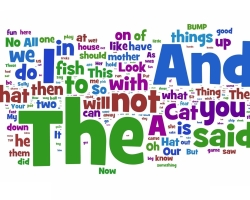The reasons for the clouding of the aquarium and methods of combating muddy water.
Content
- Why is the water in the aquarium clutched?
- Water is clutching in the aquarium with a filter - what to do: methods of elimination, tips
- Writ water in a new aquarium, after the launch of fish: Causes
- Analysis of the color of the mutet in the new aquarium and the advice to eliminate it
- Video: Muddy water in the aquarium
Many novice aquarists pay attention to the fact that the water after the settlement of the fish dramatically clutches and try to fight this phenomenon, draining the liquid, changing it to a new one. In this case, the situation is repeated. In this article, we will tell you why the water in the aquarium is clouding, and how to deal with it.
Why is the water in the aquarium clutched?
A nitrogen exchange in water is very important. Due to a violation of equilibrium or displacement in some direction, clouding is observed. This is caused by the fact that pathogens multiplied in the liquids, as well as unicellular algae.
Causes of clouding:
- The presence of fish that constantly rummage in the ground. These include a goldfish. They constantly swarm, dig, because of this and the water in the aquarium is clouding
- Overfing. A large amount of nutrients provokes the reproduction and growth of pathogens. There are a large number of them because of this, they provoke clouding
- The absence or poor work of the filter. The performance of the cleaning apparatus is not enough for good cleaning

Water is clutching in the aquarium with a filter - what to do: methods of elimination, tips
Take care of the reason and its elimination. People who are engaged in fishing, initially purchase test strips and measure all parameters. That is, the content of ammonia, nitrates, nitrites, water rigidity. If any of the parameters is overstated, or vice versa is underestimated, fight directly with this reason. If clouding is associated with violation of the nitrogen cycle, it is necessary to perform several simplest manipulations.
Ways:
- Make a partial replacement of the liquid. Do not drain, do not pour all the liquid, and do not change it to a new one. Because after the settlement of the inhabitants, a surge in the growth of bacteria begins, a few days later the liquid is clouding again.
- Next, you need to turn on the filter for maximum power. If there are views that love to delve into aquarium sand, we advise you to replace the soil with a larger one, so that fine dust and suspension do not appear in the water, and do not make it muddy.
- Try for several days not to feed pets at all or minimize their feeding. In just two to three days, if the turbidity is associated with the propagation of microorganisms and the excess of the amount of organics in the tank, the fluid will become much lighter, more transparent.
- You must see the number of inhabitants in the aquarium. If the amount exceeds the permissible norm, in any case the liquid will become muddy. Pets allocate a large amount of waste after the consumption of feed, which clog water and contribute to the growth of microorganisms. Therefore, we advise you to equip a new aquarium additionally or give or sell part of the fish to avoid overpopulation.
- Next, it is necessary to clean the soil. To do this, use a siphon and try to get rid of a large amount of garbage. Further, you need to wait a week after all these manipulations. If the situation is not corrected in any way, then be sure to purchase a strip test and measure all the quality parameters of the water. Only in this case you can understand what happened to the liquid.

Writ water in a new aquarium, after the launch of fish: Causes
Separately, it is worth talking about muddy water in a new aquarium. In the new container, this is a common cause, because there is a surge in the growth of bacteria, after the jacket of pets. This is quite normal and standard. You need to wait a week or two, if the muddy liquid continues to be the same, then you need to find out the cause. But most often in a week all garbage settles and the liquid becomes clean, transparent.
If a few days after you settled the new pets, the water in the aquarium is clouding, do not rush to panic. The fact is that the aquatic environment has not yet been formed in such containers. Accordingly, it does not have a normal biological environment and beneficial microorganisms are not enough. Therefore, they are in a state of stress. Only after their propagation can the liquid become transparent and all the garbage will settle the bottom, you need to wait.
Also, clouding may be due to the fact that there are many light particles in the ground and they rise. In no case do not need to fill a new liquid directly into the ground, because this provokes its clouding and the appearance of a suspension of small particles. Therefore, it is necessary to replace the liquid gradually, in small portions. If this is sand, then there is no danger, because most often the suspension of such soil quickly drops.

Analysis of the color of the mutet in the new aquarium and the advice to eliminate it
- If a white precipitate appears in the liquid, then do not rush to add chemical cleaners immediately. It is necessary to add a tool for cleaning in a portion of water, and only then enter the resulting suspension into the container. The fact is that all these purifiers somewhat change the parameters of water, which provokes the poor health of fish and the appearance of white plaque. If you are going to clean, then you need to carry out it in small portions or reset the fish from the container. After that, perform cleaning with a special chemical substance and only after that settle the inhabitants back.
- Infusoria also often provoke muddy water. In the first days after the arrangement of new housing, they multiply. Accordingly, a milky white hue appears. At this time, it is advisable not to populate new fish, but to wait until all the characteristics of the new liquid are normalized.
- The gray color of the mutet suggests that you poorly rinseed the gravel that is at the bottom. Before placing it in a container, you need to wash it several times. If for a decent amount of time the dregs of gray does not disappear, phosphates, heavy metals or silicates are present in the ground. In this case, you can’t hook pets. It is better to use litmus paper in order to test how alkaline environment. If the value is really exceeded, it is necessary to get rid of this gravel and replace it with a new one.
- If a suspension of brown color appears, water in the aquarium is clouding, most likely these wooden scenery make themselves felt. Brown color can also cause the use of peat. It is best to use humus. Keep in mind that it changes the level of fluid acidity, therefore, some of the inhabitants of the aquarium can act adequately, the fish may begin to hurt. If you want to get rid of brown plaque, remove the wooden snags from the aquarium and soak them for several days. I do not forget to change water often. Only after that can you install wooden decorative elements in the aquarium.
- If the color has become unnatural, possibly pink or blue, most likely the matter is in stones and decorative elements. We advise you to throw several activated coal tablets into the water. It will discolor paint and restore fluid transparency.

Do not update the liquid in the new tank for 21 days. This is necessary in order to establish a balance and useful microorganisms to propagate sufficiently. Do not rush to change water during this period. The situation will be repeated. In order not to have organic sediment at the bottom of the liquid, we advise you to take breaks in the feeding of pets for several days. If you regularly clean with a siphon, collect garbage from the bottom, it is best to use very heavy soil that sinks. Some types of sand, as well as gravel, are very light, so they pop up to the surface and provoke the appearance of turbidity.






